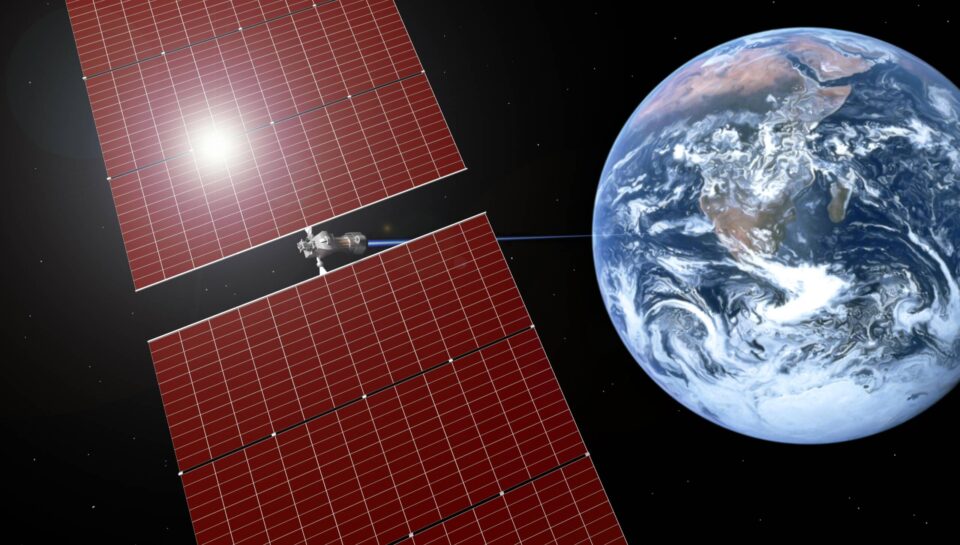The Dawn of Energy from the Heavens
You know that feeling when you’re watching a sci-fi movie and think, “wouldn’t it be amazing if that was real?” Well, grab your coffee because I’ve got some exciting news to share. Remember those giant solar panels in space beaming energy down to Earth? They’re not just Hollywood fantasy anymore. In fact, we’re living through what experts are calling the “inflection point” for space-based solar power, and it’s happening right now, in the mid-2020s.
Just last year, Caltech made history with their Space Solar Power Demonstrator (SSPD-1). This little 50-kilogram prototype did something remarkable, it actually beamed power from space to Earth for the first time ever. Can you imagine? The university’s president said it best: “Solar power beamed from space at commercial rates, lighting the globe, is still a future prospect. But this critical mission demonstrated that it should be an achievable future.”
And here’s where it gets really interesting. Japan isn’t waiting around either. They’re launching their own demonstration satellite in 2025, planning to beam about one kilowatt of power from 400 kilometers up. Sure, that’s just enough to run your dishwasher for an hour, but as JAXA notes, it’s not about the scale yet, it’s about proving the concept works. This will be the world’s first technical demonstration of fully integrated space solar power delivered to Earth.
A Global Race for the Ultimate Clean Energy
What’s fascinating is how this isn’t just one country’s moonshot anymore. Europe jumped in with their SOLARIS initiative in late 2022, and they’re serious about becoming leaders in “scalable clean energy from space.” Airbus even ran a pretty cool demonstration in September 2022, beaming solar energy 36 meters indoors to generate green hydrogen and power a model city. Their engineers are confident: “Now that we have tested the key bricks of a future space solar power system on a small scale, we are ready to take power beaming to the next level.”
China? Oh, they’re thinking big. Really big. We’re talking about a one-kilometer-wide orbital solar array by mid-century, capable of delivering multi-gigawatt power to Earth. Their roadmap includes a 10 kW trial satellite by 2028, scaling up to a commercial 2 GW space power station by 2050.
The United States isn’t sitting idle either. The Air Force Research Laboratory has been working on Project SSPIDR since 2018, with over $100 million going to Northrop Grumman. Their ARACHNE experiment, scheduled for early 2025, aims to beam power to military bases from space. Why? Because it could eliminate those dangerous fuel convoys that sustain remote operations. As they put it, it’s about “relocating those supply lines to space” to save lives.
What This Means for Business (Spoiler: Everything Changes)
Okay, so we’ve got satellites beaming power from space. Here’s where it gets really transformative for businesses. Imagine you could put a factory, data center, or mining operation literally anywhere on Earth, and still have reliable, clean power 24/7. No more being tied to locations with good electrical infrastructure or cheap energy sources. That remote desert? Perfect for your new manufacturing plant. That isolated island? Great spot for a resort.
Think about data centers for a moment. Northern Virginia’s data hub now draws 2.5 gigawatts (about 20% of the region’s power), and it’s growing 25% yearly. Ireland’s data centers consumed 21% of national electricity by 2022, up from just 5% in 2015. These facilities are literaly straining our power grids. But with space-based solar? You could put a data center in a Scandinavian forest or even underground, as long as you’ve got fiber optic cables and a clear view of the sky for your receiving antenna.
Remote mines are another perfect example. A typical off-grid mine might use 20 megawatts and pay $0.30 or more per kilowatt-hour for diesel-generated electricity. That’s several times the grid average! While current SBSP technology isn’t quite cost-competitive yet, experts project that with SpaceX’s Starship and mass production of components, we could see viable economics for these niche markets by the 2030s.
The Orbital Economy Takes Flight
Here’s something that might blow your mind: space-based solar isn’t just about sending energy down to Earth. It’s also the key to unlocking a whole economy in orbit. Right now, astronauts on the International Space Station are producing ultra-pure ZBLAN optical fibers that are 100 times better than what we can make on Earth. Why? Because microgravity allows for more perfect crystal formation.
Space solar power could fuel entire orbital factories producing advanced semiconductors, biotech materials, maybe even human organ tissue through 3D bioprinting. Airbus estimates that a real SBSP system would require satellites about 2 kilometers across to equal a nuclear plant’s output. Building something that massive? That’s going to revolutionize how we construct things in space.
The numbers are staggering. The global space economy, valued at $630 billion in 2023, is projected to soar to $1.8 trillion by 2035. Space-based solar power, orbital logistics, and asteroid mining could account for over $100 billion of new annual revenue by 2040. We’re not talking about replacing Earth’s economy, we’re talking about extending it beyond our planet.
Preparing for Location-Agnostic Operations
Let me paint you a picture of what your business might look like in 2035. Your main manufacturing facility? It’s in a location chosen purely for logistics and labor, not energy access. Your data centers? Scattered across the globe in the most cost-effective locations, all powered by beams from space. Your supply chains? They run through areas previously considered too remote or energy-poor to be viable.
Start preparing now by auditing your current facilities. Do they have clear sky access? Is there adjacent land for a future rectenna array? When building new facilities, design with flexibility in mind. Maybe reserve some roof space or ground area for eventual receivers. Think of it as future-proofing, relatively low cost now, but it’ll save you from constraints later.
And here’s a thought that might keep you up at night (in a good way): what if your competitor adopts space-based solar first? What if they can suddenly operate in locations you can’t, with lower energy costs and perfect reliability? The companies that treat this decade as preparation time for SBSP will be the ones ready to thrive when it arrives.
The Urgently Optimistic Outlook
Look, I know this all sounds like science fiction. But so did the internet in the early 90s, and look where we are now. The physics works, the demonstrations are succeeding, and the economics are rapidly improving. By 2035, we could be living in a world where energy scarcity is a thing of the past, where businesses can operate anywhere, where supply chains are resilient and clean.
The window to get involved is now. Governments are moving, pioneers are building, and the next 10 years will determine the winners of the next 100. This isn’t just about a new type of power plant, it’s about fundamentally changing how civilization accesses energy. It’s about extending human economic activity beyond Earth. It’s about solving climate change while unlocking unprecedented growth.
So what’s your move? Will you wait and see, or will you lean in and help shape this future? The companies that partnered early with internet infrastructure providers in the 1990s had a massive advantage. The same opportunity exists today with space-based solar power. The inflection point is here, the technology is real, and the future is quite literally looking up.
Welcome to the dawn of planetary-scale business. The sky isn’t the limit anymore, it’s just the beginning.
Dejan Dan Keri




